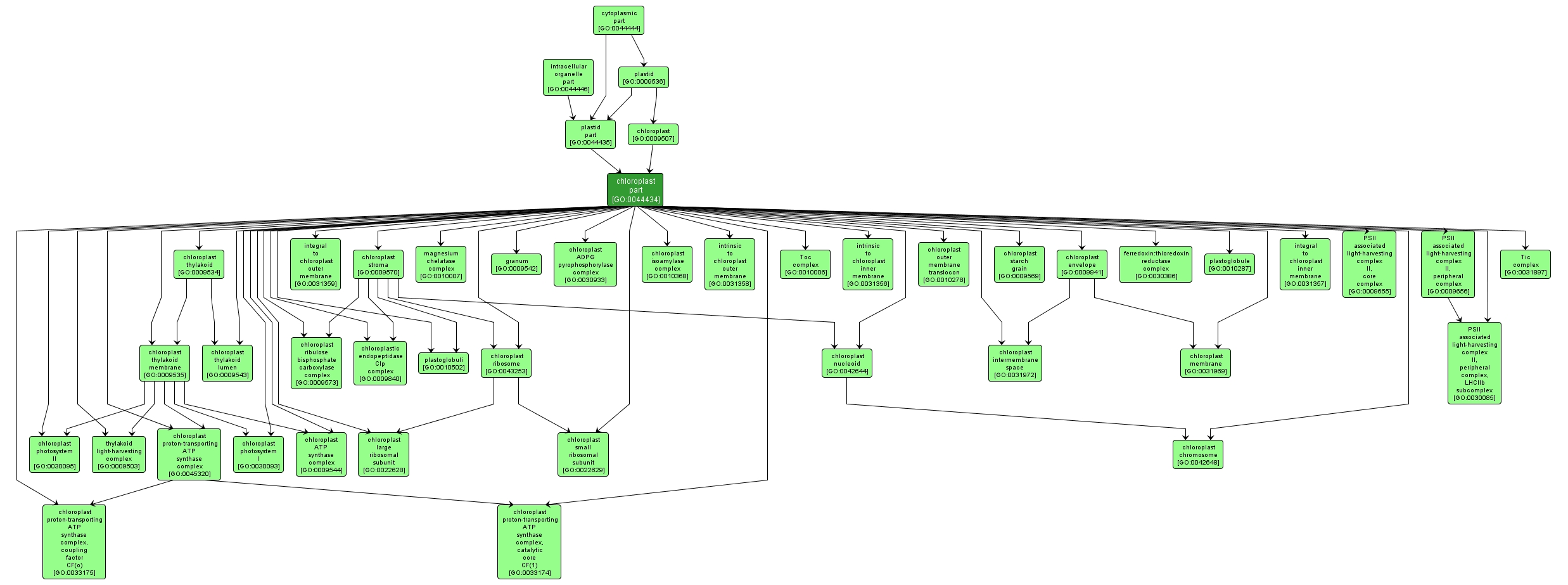GO TERM SUMMARY
|
| Name: |
chloroplast part |
| Acc: |
GO:0044434 |
| Aspect: |
Cellular Component |
| Desc: |
Any constituent part of a chloroplast, a chlorophyll-containing plastid with thylakoids organized into grana and frets, or stroma thylakoids, and embedded in a stroma. |
|

|
INTERACTIVE GO GRAPH
|














